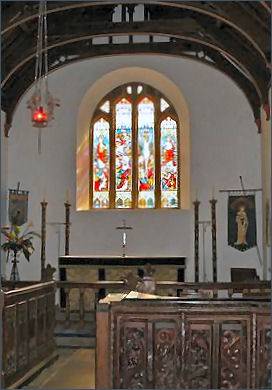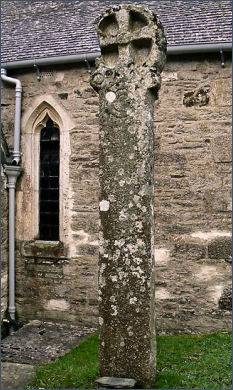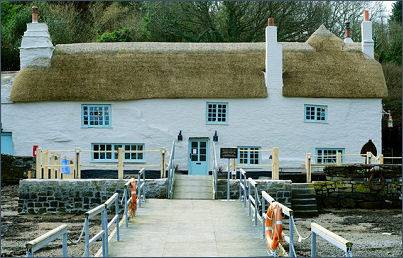Mylor
OS Grid Ref:-

 Mylor, known in Cornish as Lannwydhek, lies around five miles north of the busy town of Falmouth and consists of the villages of Mylor Churchtown and Mylor Bridge.
Mylor, known in Cornish as Lannwydhek, lies around five miles north of the busy town of Falmouth and consists of the villages of Mylor Churchtown and Mylor Bridge.
Mylor Churchtown
Mylor Churchtown is situated at the mouth of Mylor Creek.
The interesting village church is dedicated to St Melorus and is of Norman origins. A thirteenth century carving of the Crucifixion stands outside of the north transept, there is also a fifteenth century pillar piscina and an Elizabethan pulpit.
The rood screen bears a painted inscription in the Cornish language "IARYS IONAI JESW CREST" i.e. Mary, John (the Evangelist), Jesus Christ. By the late nineteenth century, the church had fallen into disrepair and a process of renovation was commenced.
The ancient granite cross in the churchyard stands at 17 feet 6 inches high and is said to be the largest in Cornwall. The cross was only identified as such in 1870 as it had been buried head downwards to enable the part above ground could serve as a butress for the church. Local tradition states that it marked the site of St Melorus grave not far from the place where it was found. St. Melorus was the son of Melianus, the Duke of Cornouaille, in Brittany, France.
Mylor Holy Well stands in the churchyard, the well water is said to be still used in baptisms, for a sense of continuity with the past.
Mylor Bridge
 Mylor Bridge is the larger of the
two villages and is situated at the head of Mylor Creek. It has a post office, newsagent, grocery store, fishmonger, butcher's shop and a pub called the Lemon Arms.
Mylor Bridge is the larger of the
two villages and is situated at the head of Mylor Creek. It has a post office, newsagent, grocery store, fishmonger, butcher's shop and a pub called the Lemon Arms.
From Mylor Bridge, you can follow the coastal path round to the Pandora Inn (left), the thatched, thirteenth century inn is one of Cornwall's best-known inns, set in a superb location beside a tidal creek with panoramic views and a pontoon that stretches out across the water. The pub serves excellent food.
The unspoilt traditional layout is on several levels and features low, wooden ceilings, ancient wall panelling, polished flagstone floors, snug alcoves and many maritime mementoes. Originally known as the Passage House, it was renamed in memory of the Pandora, a naval ship sent to Tahiti to capture the mutineers aboard Captain Bligh's Bounty. The Inn was once owned by Captain Edwards who brought the HMS Bounty mutineers to justice.
Mylor Yacht Harbour is just a short distance downstream from the village and has two good seafood restaurants and cafe, plus excellent boating facilities including pontoon berths, swinging moorings with access to the Carrick roads, and a good watersports centre along with a sailing school, boat, bike and canoe hire.